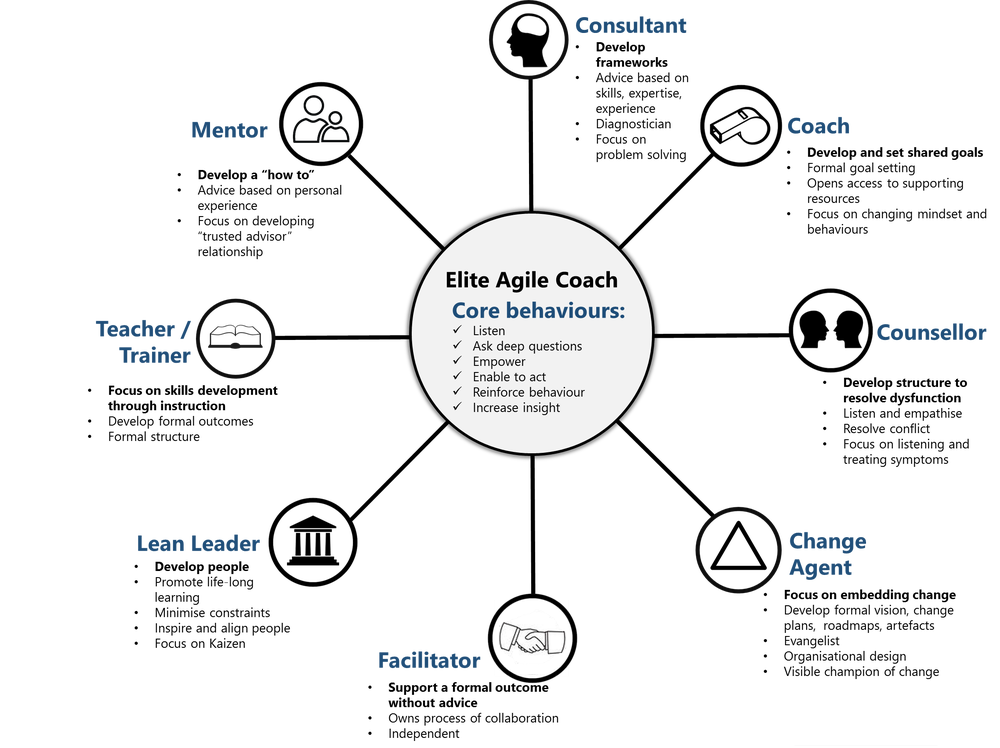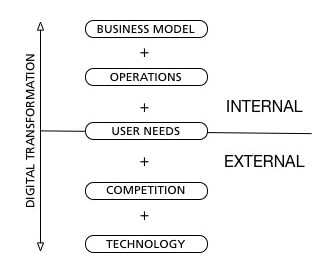|
The 8 Elements of Coaching, created by Mia Horrigan, sums up the skills an effective coach needs to have. Its a blend of directive and non-directive approaches that help individuals and team achieve optimal outcomes. In her article, she talks about her discovery that providing answers (i.e. being the 'scrum mum') may appear to help in the short term but makes teams less independent and resilient in the longer term.
2 Comments
Transformation is "a marked change in form, nature, or appearance: a sudden dramatic change, a metamorphosis or the induced or spontaneous change of one element into another". Digital transformation cuts right across every part of a business: it challenges existing business models to build and maintain competitive advantage and it impacts operations, often demanding dramatic changes in processes. At its heart are the users' needs - internal and external, that must be acknowledged and met in order to achieve success. It is driven by the external forces of consumer (user) expectation, market competition, which can change very quickly when disruptive startups join in the fray, empowered by technological advances. We live in fast paced times and its very easy to feel left behind. Digitisation is a process not a milestone that an organisation reaches and can then consider to have been “achieved”. And while each journey is tailored and unique, there are 4 phases of digitisation: the early efforts tend to be disjointed, ad hoc activities using technology to support manual tasks. Over time, automation is introduced so that some activities (i.e. forms) are digitised but all processes around them are manual. The third phase is where the technology is largely integrated but only operationally and not strategically. The fourth and most elusive phase is where technology and digital thinking are the lifeblood of the organisation and a fundamental part of the strategy It often helps to have outsiders come in and act like catalysts to enable and support the organisation to reinvent itself. Change is hard and there is a strong pressure to revert to whats familiar, even if it has negative consequences.
|
Author25 years experience in helping teams build user centred products and services, now helping digital colleagues learn how to bounce back better than before from the challenges life throws at us from time-to-time. Archives
December 2022
Categories
All
|




 RSS Feed
RSS Feed